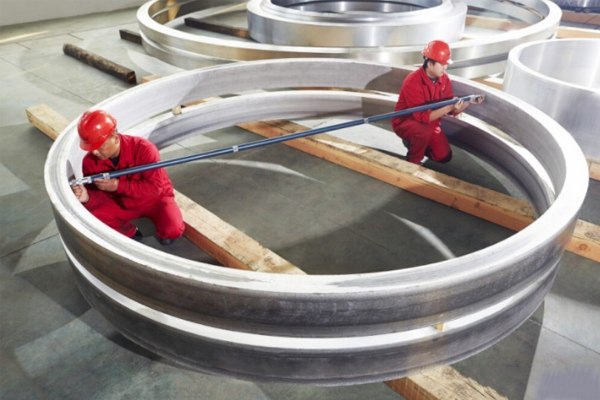Grain size refers to the grain size within a grain size crystal. The grain size can be expressed by the average area or average diameter of the grain. The grain size is expressed by the grain size grade in industrial production. General grain size is larger, that is, the finer the better. According to the following article, I hope it can help you to understand the grain size of the forgings. I believe that are familiar with the grain size of the forgings, then we must not know much about the grain size of the forgings.
The plastic deformation of the forgings breaks the coarse primary dendritic crystals and has an important effect of grain refinement. On the other hand, there is a recrystallization process during plastic deformation at high temperature. During high temperature plastic deformation, the grain size of the forgings after recrystallization is determined by temperature, deformation degree and speed. Therefore, the grain size of forgings obtained by different forging processes is different.
The main mechanical properties of the forgings with coarse grains are that their plasticity and toughness are significantly lower than those with fine grains. Refining grain by heat treatment is not only labor-intensive and costly, but also extremely difficult and impossible for some alloy steels. Therefore, the reasonable forging process of certain steel grades must be worked out according to the recrystallization diagram of hot working.
The higher the forging temperature, the larger the grain size of the forgings after recrystallization. Therefore, the final forging temperature should be reduced as far as possible to ensure the grain refinement under the condition that the forgings will not produce low temperature forging crack. However, it is very difficult for large forgings to ensure the same low final forging temperature in all parts of the same forging. This can only be done with the experience and skill of the master workers.
At a certain forging temperature, there is a critical deformation degree range. When the deformation degree is within this range, the recrystallized grain of the forgings is relatively coarse. Therefore, the degree of deformation during forging, especially in the last fire, should be avoided as far as possible within the critical degree of deformation.
Grain is not uniform refers to some parts of the forging grain is particularly coarse, some parts are smaller. The main reason for the uneven grain size is that the uneven deformation of the billet makes the grain fragmentation degree different, or the deformation degree of the local area falls to the critical deformation area, or the local work hardening of the superalloy, or the local coarse grain size when quenching and heating. Heat-resistant steels and superalloys are particularly sensitive to grain inhomogeneity. The uneven grain size will decrease the durability and fatigue performance of the forgings.
This article mainly tells about the grain size of forgings. I hope it will be helpful to you.
Post time: May-08-2021

